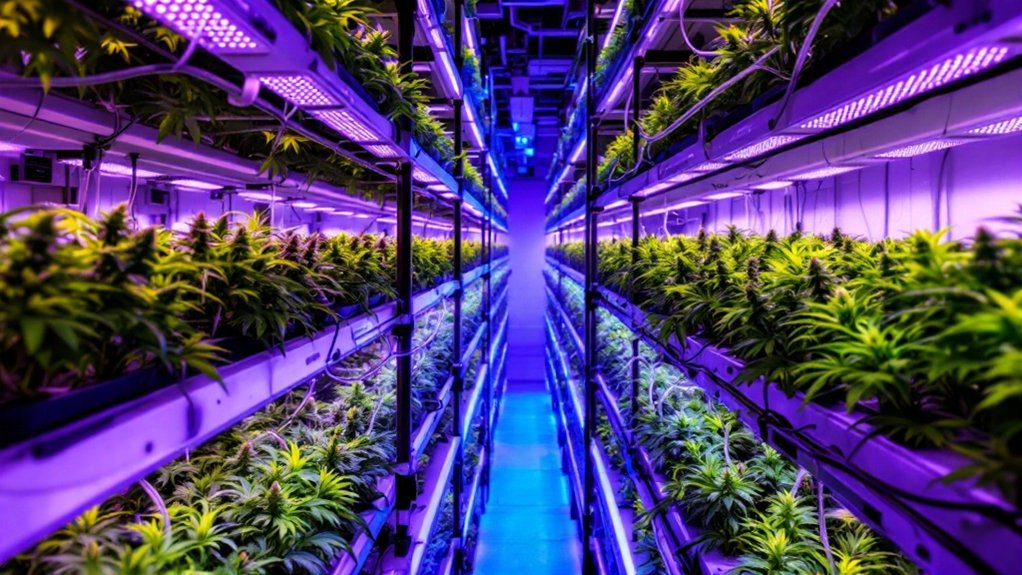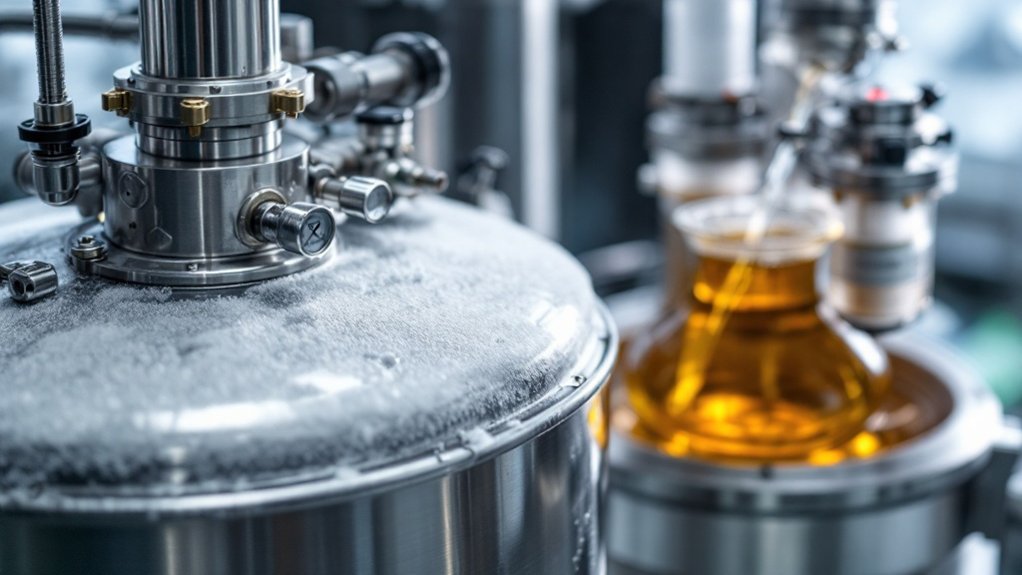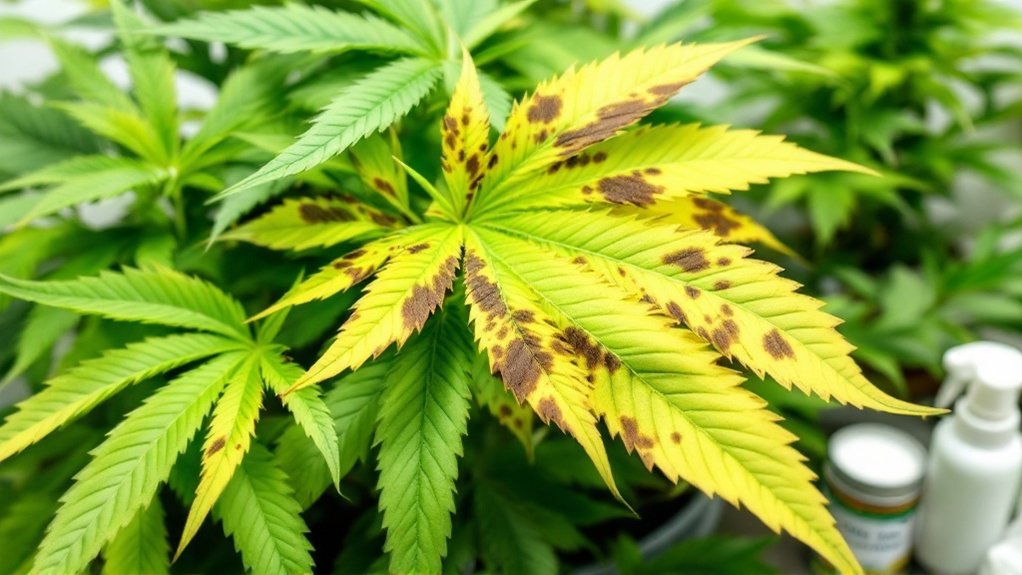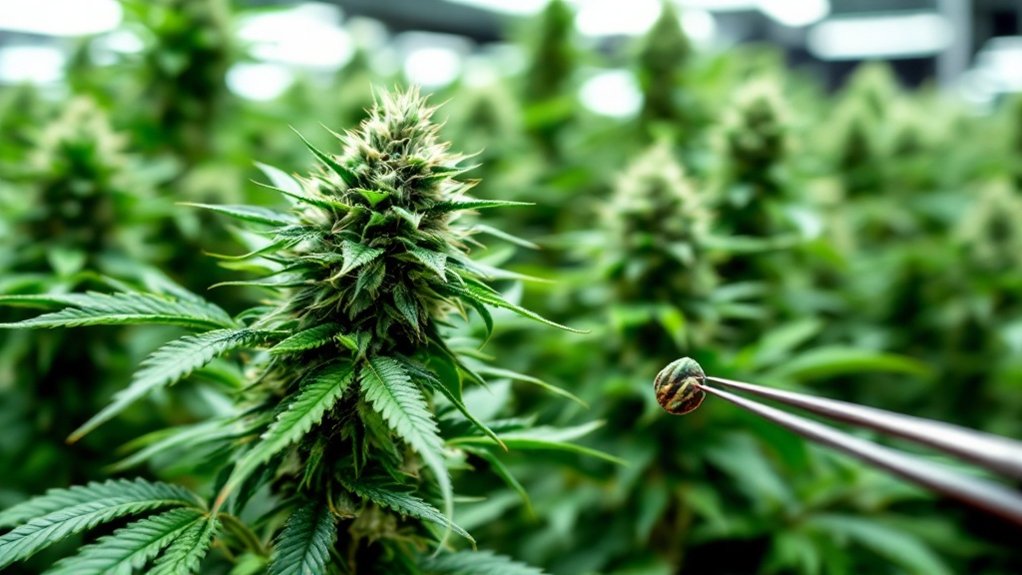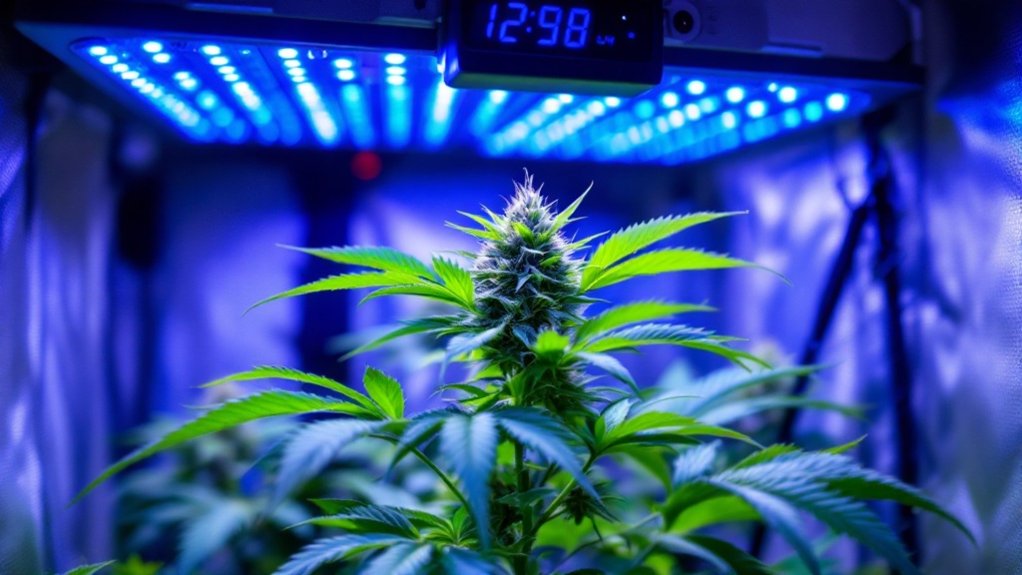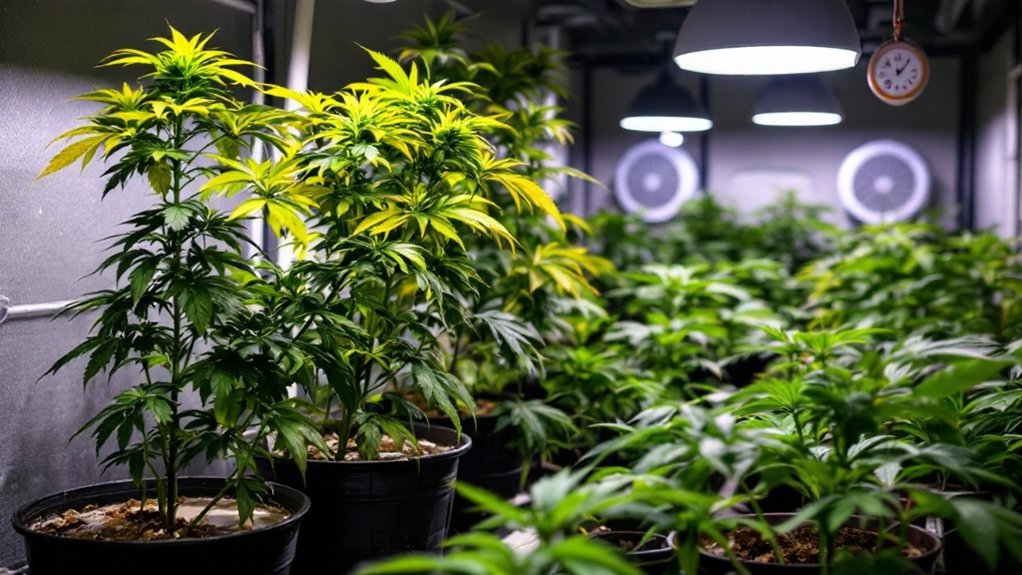Commercial indoor hydroponic cannabis farms utilize soil-less cultivation techniques that deliver precise nutrient solutions directly to plant roots. These systems maximize production efficiency through vertical configurations that increase canopy square footage while maintaining consistent environmental conditions. Automated monitoring of temperature, humidity, and lighting guarantees batch-to-batch consistency in cannabinoid profiles while reducing water consumption by up to 90% compared to traditional methods. The integration of advanced growing technologies provides commercial cultivators with greater control over quality and pharmaceutical properties throughout the production cycle.
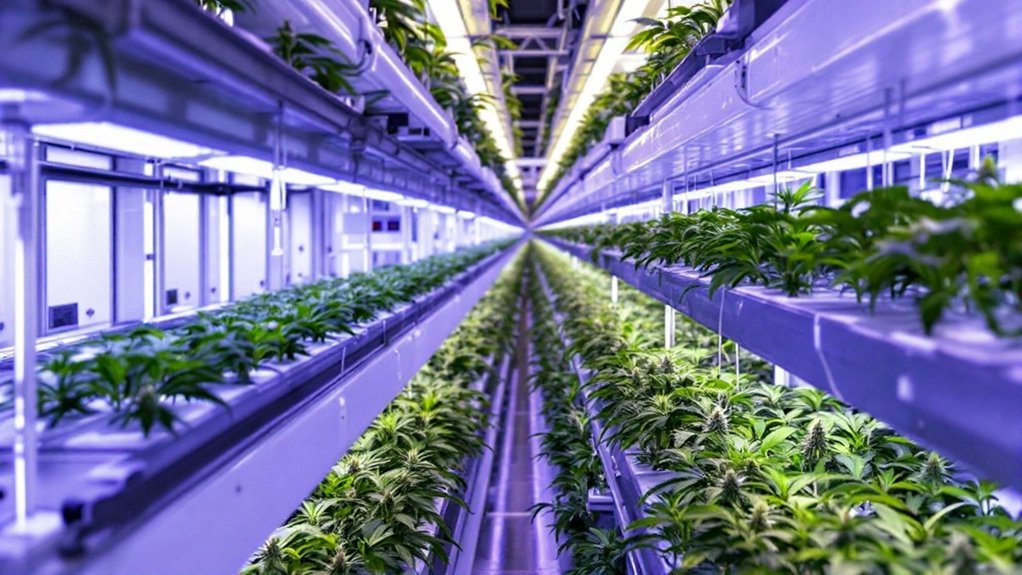
The revolution in cannabis cultivation is taking root vertically as commercial indoor hydroponic farms transform the industry landscape. The global cannabis cultivation market is projected to expand from $179.32 billion in 2024 to $208.64 billion in 2025, representing a compound annual growth rate (CAGR) of 16.3%. Within this expanding sector, cannabis vertical farming currently occupies a $487.5 million market share and is forecasted to grow at an impressive 19.3% CAGR through 2030, outpacing the broader market’s growth trajectory.
Hydroponics technology forms the backbone of advanced cannabis cultivation systems, with the market expected to reach $17.3 billion in 2025 from $15.57 billion in 2024. This soil-less growing technique enables precise management of nutrient delivery and environmental conditions critical for cannabis production. Many commercial operations utilize both aggregate systems and liquid systems to optimize growth cycles depending on strain requirements. Automated systems further enhance these hydroponic setups by ensuring that plants receive optimal conditions around the clock.
Commercial hydroponic systems utilize water-based solutions that deliver nutrients directly to plant roots, eliminating soil-borne diseases while maximizing absorption efficiency. These systems work in conjunction with specialized LED lighting technology that provides specific light spectrums needed for different growth stages. Industry analytics from the Commercial Hydroponic Systems Market Report indicate that flood and drain systems are becoming increasingly popular for cannabis cultivation due to their reliability and scalability.
Vertical farming configurations dramatically increase production capacity by stacking growing systems in multiple tiers within the same footprint. This spatial efficiency allows cultivators to maximize canopy square footage while reducing the cost of goods sold (COGs) through more efficient resource utilization.
Despite higher initial investment costs, the notably increased yield per square foot accelerates return on investment compared to traditional single-tier cultivation methods.
Quality control represents a paramount advantage of indoor hydroponic cannabis cultivation. Medical cannabis requires specific pharmacological characteristics that can be consistently achieved through precise environmental management.
Temperature, humidity, light intensity, and nutrient concentrations are continuously monitored and adjusted to maintain ideal growing conditions. This level of control guarantees batch-to-batch consistency in cannabinoid profiles and minimizes contamination risks from pests and pathogens.
Sustainability features prominently in modern hydroponic cannabis operations. These systems typically reduce water consumption by recycling nutrient solutions, while energy-efficient LED lighting decreases electricity usage compared to conventional grow lights.
Automated environmental controls further reduce resource waste by providing plants with exactly what they need when they need it. As regulatory frameworks for cannabis continue to evolve, these controlled cultivation methods help producers meet strict compliance requirements for medicinal cannabis while maintaining production predictability, essential for commercial viability in this highly regulated industry.
Frequently Asked Questions
How Much Electricity Does a Commercial Cannabis Hydroponic Farm Consume?
Commercial cannabis hydroponic farms consume substantial electricity, typically ranging from 1,000 to 2,000 kilowatt-hours per pound of cannabis produced.
These operations require approximately 200 kWh per square foot of canopy annually, with lighting and HVAC systems comprising the majority of power demands.
The industry currently accounts for roughly 1% of total U.S. electricity consumption, a figure projected to reach 3% by 2035 as the market expands.
Energy efficiency improvements through LED lighting can reduce consumption by up to 50%.
What Security Measures Are Required for Indoor Cannabis Facilities?
Indoor cannabis facilities require extensive security measures mandated by state regulations.
These typically include electronic access control systems with commercial-grade locks, continuous video surveillance with minimum retention periods, and alarm systems featuring silent duress capabilities.
Secure storage infrastructure, such as reinforced vaults for product and cash, is essential.
Visitor management protocols must be implemented, including sign-in procedures and escort requirements.
Most jurisdictions require annual third-party security audits to verify compliance with these protective measures.
How Do You Prevent Pest Outbreaks in Hydroponic Cannabis Systems?
Preventing pest outbreaks in hydroponic cannabis systems requires a multi-faceted approach.
Regular sanitization of equipment and maintaining closed growing environments greatly reduces entry points for pests. Temperature control below 68°F (20°C) specifically deters spider mites, while proper airflow management creates unfavorable conditions for many pests.
Early detection using yellow sticky traps allows for prompt intervention. Natural control methods including beneficial predators and neem oil applications provide effective management without harsh chemicals.
Implementing integrated pest management strategies rather than single-method approaches yields superior results.
What Are Typical Profit Margins for Commercial Hydroponic Cannabis Operations?
Commercial hydroponic cannabis operations typically achieve gross profit margins between 45% and 55%.
Successful operations report net profit margins ranging from 15% to 35%, depending on operational efficiency and scale.
Small-scale cultivators may generate annual profits of $100K to $250K, while larger enterprises can exceed $1 million due to economies of scale.
The hydroponic method, particularly when implementing eco-friendly practices, tends to yield higher profit margins compared to conventional cultivation techniques.
What Licenses Are Needed to Start a Commercial Cannabis Hydroponic Farm?
Commercial cannabis cultivation requires several licenses depending on jurisdiction. Operators typically need a grower/processor permit, which enables cultivation, harvesting, and processing activities.
Application fees range from $250 in Washington to $10,000 in Pennsylvania, with annual license fees varying accordingly. Many states impose capital requirements, such as Pennsylvania’s $2 million threshold.
License categories include standard cultivation, micro-cultivation (under 200m²), and nursery licenses for propagation materials.
Regulatory compliance also necessitates adherence to facility security requirements and approved agricultural practices.
